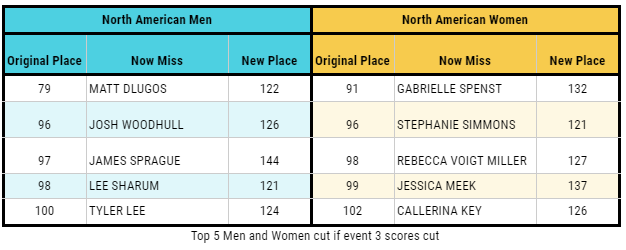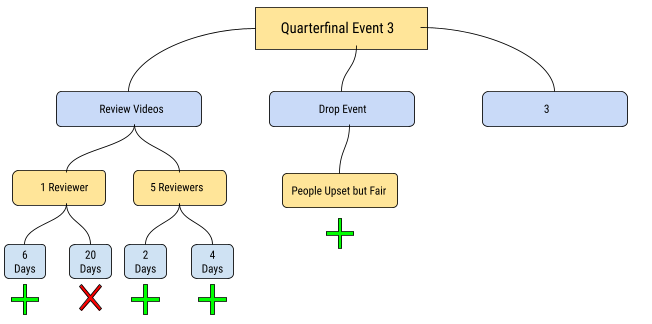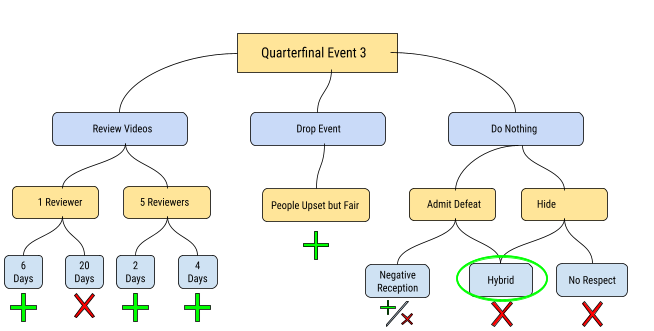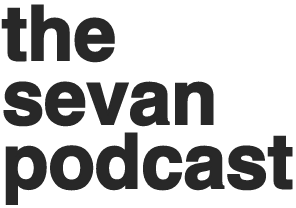Quarterfinals Event 3 & CrossFit’s Choices
By: Tyler Watkins
“The clock was ticking and every second counted. There were no good options. Each one could have deadly consequences. But I had to make a call.” – Jocko Willink, Extreme Ownership
Cover and Move. This is a principle that Jocko Willink lays out in his book. It’s a principle he learned from the Navy Seals but that he now applies to business. It’s simple. When shit hits the fan, the teams involved coordinate to get the problem solved. Cover each other and move to somewhere where a better decision can be made.
Shit hit the fan for the CrossFit Games team after Individual Quarterfinals Event 3. Handfuls of athletes left and right were being found to have not correctly executed the workout. This was evident due to athletes posting scores well beyond the observable capabilities that their other event finishes exemplified. CrossFit fans everywhere covered by reaching out to guys like Andrew Hiller and Brian Friend to get ground swell in hopes that CrossFit would fix the issue. What was CrossFit’s move during the cover provided? In the military these “Cover and Move” situations often involve the threat of death. In business the stakes aren’t that high in a direct sense… In a metaphorical sense death can come swiftly to a company that refuses to act. Maybe I’m being over dramatic and poetic when it comes to CrossFit. Then again maybe not.
The Choices:
As it normally is in these mob events I sit back and watch. People form opinions quickly, often too quickly. I waited to see what options CrossFit had and how they would act. Fast forward to now and it’s nearly Semifinals time and the mainstream has its attention focused towards that. While I want to focus on better and brighter futures, this Quarterfinals problem hasn’t been dealt with.
The way I see it, CrossFit had 3 choices ahead of them to confront Quarterfinals Event 3. None of these have been covered in depth. Allow me to do so.

Choice 1: Video Review
This was the first thought in everyone’s mind, “THEY NEED TO ASSURE THAT THE SCORE ARE ALL VALID!!!” Fair enough. CrossFit, you have chosen to bear the cross of running a fair competition and crowning the fittest on earth, now it’s time to bear the full weight of that heavy bastard. As I usually try to do in these situations I tried thinking about the other side and what they might be facing. I thought, “What would it take to assure all the scores that really matter are correct? Is this feasible from a business perspective? Is this feasible from a time perspective?” So you all of course know what I did. I got on google sheets and ran my analysis.
I’m an Accounting Manager in my day job so I spend a lot of my time defining the scope of a project. How much time would it take to fix this issue? Looking down the leaderboard you can get an estimation pretty quickly. Looking at the men and women in qualifying spots or reasonable backfill spots you need to find the worst placement in Event 3 as they would be the last affected person. For the Men of North American that happens to be 1122nd and 742nd for the women. In total that’s 1864 total videos that needed to be reviewed in North America. Converting that to human time I assumed that the reviewer could find out within a minute and a half to five minutes for each video whether an athlete made an egregious error or not. This range would give us 46 hours or 6 working days up to 155 hours or 20 working days for one person to accomplish.
Given that we don’t know how large the Games team is we have to make a few assumptions. If 1 person is doing this review (unlikely) the minimum it takes is 6 days to solve the issue. Worst case scenario, you have one person to take care of this issue and it could take them 20 days on their own; not a solid solution. Another option if you had 5 reviewers, you could review all of the videos in under 2 days in a low estimate. On the higher estimate it would take a team of 5 people 4 working days to solve the issue. Both of these seem like really attainable solutions. So why didn’t CrossFit choose them?

Choice 2: Drop the Scores
Dropping the scores was the initial solution I proposed. If an ACT or SAT test had questions on them that could accept two answers like B and C due to an accident the governing bodies would likely drop the questions. Again, this is a “Cover and Move” situation. There are no good options. What happens if you drop Event 3? Let’s play that out.

Top 5 Men and Women cut if event 3 scores cut
The chart above is a snapshot of the results of cutting the results of Event 3 from the total. As you can see there are some important names on the Men’s side and a few on the Women’s. The chart shows the top 5 from each division (a full list can be found here.) Matt Dlugos was the highest ranking athlete cut in the event of an adjustment. Notably Dlugos is the only athlete on the Mens or Womens side that was inside the top 90. There were a total of 20 men who made the cut who wouldn’t if the event was cut. On the Women’s side 17 athletes were cut who had a safe place inside the top 120.
Playing this forward we know so far that (as of 05/03/22) the last backfill positions have been to 126th and 140th for the Men and Women, respectively. Thus, all of the Men except James Sprague would have gotten a backfill position for those in the chart. On the Women’s side all 5 of the women show in the chart and a total of 9 out of the 17 would have been awarded a backfill position. In this case only 8 women would have been “unfairly’ affected as opposed to an arguably large unknown amount in the event of not reviewing or changing the leaderboard. I ran this analysis on my own in a matter of minutes and CrossFit was capable of doing this weeks ago. So, why didn’t they choose this option?

Choice 3: Do Nothing
We finally make it to the last of the decisions. In some cases a lack of action is the best option. Giving the Devil his due, are there reasons CrossFit could have chosen this? To break this down there are actually two options in doing nothing: Admit Defeat and Hide.
Admitting defeat would have required little work. Maybe CrossFit didn’t have the human capital to get the work done; even though I have presented a viable option proving the opposite. Maybe CrossFit didn’t want to cut the event because they feared it would signal to the community that they aren’t capable of running a competition. All of these are fair assumptions. In admitting defeat CrossFit would have had to come out with a statement saying they had totally messed up. They would have said that unfortunately there wasn’t much they could do and they would move forward making sure this horrible oversight never happened again. This would have gone a long way in the community. Most people just want to know you messed up and are going to fix it.
In Doing Nothing you can also hide. Which is to say you truly do nothing and hope the community gets distracted and forgets. This is the option that signals to weakness. This is the ultimate last resort. No community would continually follow a company that did this.
What did CrossFit do?
Getting straight to it, CrossFit chose a hybrid of the “Do Nothing” options. CrossFit both released a statement and hid. CrossFit’s Games Director Adrian Bozman released a statement saying, “We had many athletes complete this workout correctly. Many also did not submit a video as they likely did not expect to have a top score. To give them [the] benefit of the doubt we reached out to give them time to supply video. Those unable to verify via video will have adjustments made before the leaderboard is final.” This was never followed up. CrossFit slipped into the shadows and never made us confident that the leaderboard was valid at all.

My opinion:
I’m the oldest of 3 brothers. We are pretty light hearted, constantly joking, and always have fun. We expect the most out of each other though. It’s an unspoken covenant. We have a last name that ties us all together, something we represent, it’s what keeps us accountable when we want to be our worst. We are quick to let each other know, “Hey, you’re really screwing up and you need to get it together.” We continue to hammer on each other until everything is running smoothly again. But… There have been times when one of each of us has fallen so far that it’s time to stop bashing and pick our brother up and help him to move forward.
With CrossFit, during the first few mistakes we bashed and threw stones because we expected them to uphold the name, take the hits, and move forward. We respected you. While some of the hits keep coming from brothers in our community I can help but get that feeling like I’m kicking my brother while he’s down. The compassion comes from me wanting you to succeed. We share this name. We are all together CrossFit.
Perhaps what makes me the most sad is what happens after my brother falls repeatedly. We begin to expect less and less of you. I’ve tried to help friends out of drug addiction. The first time going to sobriety you are fully faithful and hopeful of that friend. After the 4th relapse you start to hear their words that they want to be sober but you have been conditioned to know these words are hollow. I’m beginning to fear that we are quickly approaching this place with CrossFit. You have messed up. We have been patient and followed you to the solutions. As more and more problems have come you have promised open and clear communication, a more professional sport, etc. Yet these promises have not been delivered. These words are starting to feel hollow.
I’ll remain hopeful for now. I’ll always help my brother. I’ll always get him what he needs. With that being said, there will come a time where he doesn’t represent me anymore.


